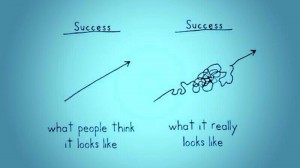Having an effective sales process is an ongoing labour of love – it needs to continuously improve and adapt.
Over the last 30 years we have worked with, been subject to, reviewed and critiqued, or designed and implemented many business processes, predominately in the sales and bid space for Finding, Winning and Retaining customers.
Below are a few reasons why they are (largely) incomplete and ineffective:
They are designed without input from the very people who have to use them every day, ignoring current good practices, and failing to get buy-in from their intended audience
- They are linear (with a start and an end) rather than circular (as in virtuous circle, see below)
- They omit a stage that captures lessons learned, and therefore fail to deliver continuous improvement
- They are not visible to the very people who should be using them every day, being stored on a server, when they should be on the wall of every office in every building
Continuous Improvement seems to be a particular Achilles heel in many organisations’ processes and a serious oversight, which we come across again and again.
To illustrate this, we were once asked to critique a sales process that apparently cost $1M to develop; its final stage was Customer Award Decision. It was also 200 pages long, and lacked a one page summary. Clearly, continuous improvement was not on the mind of the organisation that took the $1M and scarpered!
Continuous improvement is embedded into the Get To Great® approach to sales effectiveness:
- Enable an assessment of the end to end sales process with all the stakeholders involved in Finding, Winning and Retaining customers
- Apply the proven Get To Great® benchmarking model to rapidly identify and prioritise the performance gaps and define a realistic action plan to fix them
- Implement the new processes, reviewing their impact regularly to quantify performance improvement, learn from the outcomes and respond to their effect
- Measure performance at least annually as part of the rhythm of the business to learn and adapt and to enable continuous sales performance improvement
This proven and trusted framework for sales transformation is valuable to any business looking to tackle specific challenges such as improved lead generation, increasing its sales conversion rate, reducing the cost of sale, improving its bid management capability and as referred to in this blog, for the continual improvement of an organisation’s sales effectiveness.
The approach has been deployed to great effect by many enterprise businesses that have applied Get To Great® Sales Performance Improvement to deliver a step change in finding, winning and retaining customers. They have increased their ability to engage, qualify and close profitable sales as a direct result.
APR







